Whilst on his travels my Australian penpal stopped at Nymphenburg where the park is full of fascinating follies. Built in 1722 by Joseph Effner the Baths (or sauana) was the focal point of the park.
I love that the building is set in a lawn of daisies. I hate the American preference for pristine green lawns; give me wildflowers!
The main room right when you enter is the banqueting hall.
The ceiling frescoes were badly damaged by the bombing of Nymphenburg during WWII but have been recently restored.
I love these mirrored niches mirroring the transoms over the french doors. Both transoms and niches hold a collection of busts.
The baths are shockingly opulent. The balcony above was for people to observe those in the pool below.
The most amazing part of this pavilion though are the original but recently restored hand-painted Chinese wallpaper in the 4 rooms of the "Elector's apartment".
This room featured beautiful pink tea-stained and emerald green birds and flowers.
Another room features a more scenic Chinese wallpaper.
The details are fascinating.
The colors also are amazingly vivid.
The houses in this wallpaper are the main attraction.
The park is full of beautiful follies and looks like a great place to spend a day. Thanks to my penpal for sharing his travels with us all!
skip to main |
skip to sidebar

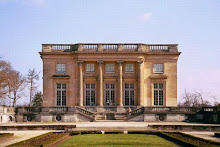
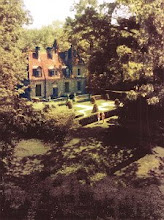


About Me

- ArchitectDesign™
- A residential architect obsessed with design. Be the change you want to see in the world!!
Search this blog
Unless otherwise noted, all photography is the property of ArchitectDesign and is protected by copyright. Please contact me for information in acquiring or using any image.
Sponsors of ArchitectDesign
My Blog List
-
-
-
-
-
-
A Handsome Ensemble2 days ago
-
PLEASE UPDATE THE RSS FEED3 days ago
-
-
-
Ep 149: Moonlighting6 days ago
-
-
-
-
-
Happy Easter3 weeks ago
-
-
THE END OF ARCHITECTURE?4 weeks ago
-
-
-
-
-
-
-
Bourbon-Ginger Pecan Pie6 months ago
-
-
-
Newly Opened Hôtel Norman in Paris7 months ago
-
-
-
-
-
-
-
Ombyggnad. Arbete pågår.1 year ago
-
-
-
-
-
Passion Project2 years ago
-
-
A Year at Clove Brook Farm3 years ago
-
-
-
for goodness sakes3 years ago
-
-
-
This feed has moved and will be deleted soon. Please update your subscription now.3 years ago
-
eric skotnes3 years ago
-
Serena & Lily is OPEN3 years ago
-
-
This feed has moved and will be deleted soon. Please update your subscription now.3 years ago
-
-
Old Long Island - Now on Instagram!3 years ago
-
-
‘The Disappearance of My Mother’4 years ago
-
-
-
-
-
Curbed DC’s greatest hits4 years ago
-
optimism and white paint4 years ago
-
-
-
-
-
-
-
Photo5 years ago
-
-
-
-
-
-
-
Thanksgiving6 years ago
-
-
-
Crescendo6 years ago
-
-
Hampton Designer SHOWHOUSE6 years ago
-
A Chinese garden at Penrhyn Castle6 years ago
-
-
-
rafael ochoa6 years ago
-
-
-
-
-
RIP Lucinda Ebersole7 years ago
-
-
-
-
-
-
Quatreau Faucet7 years ago
-
-
-
Farm Life: Our New Project7 years ago
-
GREAT GARDEN YEAR7 years ago
-
-
-
-
-
-
-
-
-
-
-
L.A. story, in 36 hours8 years ago
-
-
-
EEE's Summer Reading List8 years ago
-
-
-
-
MY PORCH IS DEAD!9 years ago
-
-
-
Michele Varian9 years ago
-
roots and leaves themselves alone9 years ago
-
-
-
-
-
-
-
-
-
A Day to Celebrate9 years ago
-
-
-
-
-
-
-
-
-
-
-
-
-
| Blog: |
| ArchitectDesign |
Topics: |
| design, movies, washington |
Reader Favorite - Petit Trianon

Chateau des Thons

Portland fountain

Springtime!
Blog Archive
-
►
2024
(7)
- ► 04/07 - 04/14 (2)
- ► 03/24 - 03/31 (1)
- ► 03/17 - 03/24 (1)
- ► 03/10 - 03/17 (2)
- ► 01/28 - 02/04 (1)
-
►
2023
(2)
- ► 12/31 - 01/07 (1)
- ► 09/24 - 10/01 (1)
-
►
2022
(1)
- ► 12/25 - 01/01 (1)
-
►
2021
(3)
- ► 11/07 - 11/14 (1)
- ► 09/19 - 09/26 (1)
- ► 05/02 - 05/09 (1)
-
►
2020
(7)
- ► 12/20 - 12/27 (1)
- ► 12/13 - 12/20 (1)
- ► 07/12 - 07/19 (1)
- ► 05/03 - 05/10 (1)
- ► 03/08 - 03/15 (1)
- ► 02/23 - 03/01 (1)
- ► 02/09 - 02/16 (1)
-
►
2019
(15)
- ► 12/29 - 01/05 (1)
- ► 11/10 - 11/17 (1)
- ► 10/06 - 10/13 (1)
- ► 07/21 - 07/28 (1)
- ► 07/14 - 07/21 (1)
- ► 06/30 - 07/07 (3)
- ► 06/23 - 06/30 (1)
- ► 05/05 - 05/12 (1)
- ► 04/28 - 05/05 (1)
- ► 04/14 - 04/21 (1)
- ► 03/24 - 03/31 (1)
- ► 02/24 - 03/03 (1)
- ► 01/13 - 01/20 (1)
-
►
2018
(17)
- ► 12/02 - 12/09 (1)
- ► 10/21 - 10/28 (1)
- ► 10/14 - 10/21 (1)
- ► 09/30 - 10/07 (1)
- ► 09/16 - 09/23 (1)
- ► 09/02 - 09/09 (1)
- ► 07/22 - 07/29 (1)
- ► 07/08 - 07/15 (1)
- ► 07/01 - 07/08 (1)
- ► 06/24 - 07/01 (1)
- ► 06/17 - 06/24 (1)
- ► 04/01 - 04/08 (1)
- ► 03/18 - 03/25 (1)
- ► 03/04 - 03/11 (1)
- ► 02/18 - 02/25 (1)
- ► 02/11 - 02/18 (1)
- ► 02/04 - 02/11 (1)
-
►
2017
(27)
- ► 12/17 - 12/24 (1)
- ► 11/26 - 12/03 (1)
- ► 10/29 - 11/05 (1)
- ► 10/08 - 10/15 (1)
- ► 09/24 - 10/01 (1)
- ► 09/17 - 09/24 (1)
- ► 09/03 - 09/10 (1)
- ► 08/13 - 08/20 (1)
- ► 07/30 - 08/06 (1)
- ► 07/23 - 07/30 (1)
- ► 07/16 - 07/23 (1)
- ► 07/09 - 07/16 (1)
- ► 06/25 - 07/02 (1)
- ► 06/18 - 06/25 (2)
- ► 06/11 - 06/18 (1)
- ► 05/28 - 06/04 (1)
- ► 05/21 - 05/28 (1)
- ► 05/14 - 05/21 (1)
- ► 04/16 - 04/23 (1)
- ► 03/26 - 04/02 (1)
- ► 03/19 - 03/26 (1)
- ► 02/26 - 03/05 (1)
- ► 02/19 - 02/26 (1)
- ► 02/05 - 02/12 (1)
- ► 01/15 - 01/22 (1)
- ► 01/08 - 01/15 (1)
-
►
2016
(26)
- ► 12/04 - 12/11 (1)
- ► 11/27 - 12/04 (1)
- ► 11/20 - 11/27 (1)
- ► 11/13 - 11/20 (1)
- ► 11/06 - 11/13 (1)
- ► 10/23 - 10/30 (1)
- ► 09/18 - 09/25 (1)
- ► 09/11 - 09/18 (3)
- ► 08/21 - 08/28 (1)
- ► 07/31 - 08/07 (1)
- ► 07/03 - 07/10 (2)
- ► 06/19 - 06/26 (1)
- ► 06/05 - 06/12 (1)
- ► 05/22 - 05/29 (1)
- ► 05/15 - 05/22 (1)
- ► 04/24 - 05/01 (1)
- ► 04/10 - 04/17 (1)
- ► 03/27 - 04/03 (1)
- ► 03/20 - 03/27 (2)
- ► 01/24 - 01/31 (1)
- ► 01/17 - 01/24 (2)
-
►
2015
(56)
- ► 12/13 - 12/20 (2)
- ► 11/29 - 12/06 (1)
- ► 11/22 - 11/29 (1)
- ► 11/01 - 11/08 (1)
- ► 10/18 - 10/25 (1)
- ► 10/11 - 10/18 (1)
- ► 10/04 - 10/11 (1)
- ► 09/20 - 09/27 (1)
- ► 09/13 - 09/20 (1)
- ► 08/30 - 09/06 (1)
- ► 08/23 - 08/30 (1)
- ► 08/16 - 08/23 (1)
- ► 08/02 - 08/09 (1)
- ► 07/26 - 08/02 (1)
- ► 06/28 - 07/05 (2)
- ► 06/21 - 06/28 (1)
- ► 06/14 - 06/21 (2)
- ► 06/07 - 06/14 (1)
- ► 05/31 - 06/07 (2)
- ► 05/24 - 05/31 (1)
- ► 05/03 - 05/10 (2)
- ► 04/26 - 05/03 (3)
- ► 04/19 - 04/26 (1)
- ► 04/05 - 04/12 (2)
- ► 03/29 - 04/05 (2)
- ► 03/15 - 03/22 (2)
- ► 03/08 - 03/15 (3)
- ► 03/01 - 03/08 (3)
- ► 02/22 - 03/01 (3)
- ► 02/15 - 02/22 (1)
- ► 02/01 - 02/08 (3)
- ► 01/25 - 02/01 (2)
- ► 01/18 - 01/25 (1)
- ► 01/11 - 01/18 (3)
- ► 01/04 - 01/11 (1)
-
▼
2014
(91)
- ► 12/28 - 01/04 (1)
- ► 12/21 - 12/28 (2)
- ► 12/14 - 12/21 (2)
- ► 12/07 - 12/14 (1)
- ► 11/30 - 12/07 (2)
- ► 11/23 - 11/30 (3)
- ► 11/16 - 11/23 (2)
- ► 11/09 - 11/16 (2)
- ► 11/02 - 11/09 (2)
- ► 10/26 - 11/02 (2)
- ► 10/19 - 10/26 (1)
- ► 10/12 - 10/19 (2)
- ► 10/05 - 10/12 (2)
- ► 09/28 - 10/05 (1)
- ► 09/21 - 09/28 (2)
- ► 09/14 - 09/21 (2)
- ► 09/07 - 09/14 (3)
- ► 08/31 - 09/07 (3)
- ► 08/24 - 08/31 (3)
- ► 08/17 - 08/24 (2)
- ► 08/03 - 08/10 (1)
- ► 07/27 - 08/03 (3)
- ▼ 07/20 - 07/27 (3)
- ► 07/13 - 07/20 (2)
- ► 06/29 - 07/06 (1)
- ► 06/22 - 06/29 (3)
- ► 06/15 - 06/22 (2)
- ► 06/08 - 06/15 (2)
- ► 05/25 - 06/01 (1)
- ► 05/18 - 05/25 (2)
- ► 05/11 - 05/18 (3)
- ► 05/04 - 05/11 (2)
- ► 04/27 - 05/04 (1)
- ► 04/13 - 04/20 (1)
- ► 04/06 - 04/13 (2)
- ► 03/30 - 04/06 (2)
- ► 03/23 - 03/30 (2)
- ► 03/16 - 03/23 (1)
- ► 03/09 - 03/16 (1)
- ► 03/02 - 03/09 (2)
- ► 02/23 - 03/02 (3)
- ► 02/16 - 02/23 (2)
- ► 02/09 - 02/16 (1)
- ► 02/02 - 02/09 (1)
- ► 01/26 - 02/02 (3)
- ► 01/12 - 01/19 (2)
- ► 01/05 - 01/12 (2)
-
►
2013
(83)
- ► 12/29 - 01/05 (2)
- ► 12/22 - 12/29 (1)
- ► 12/15 - 12/22 (1)
- ► 12/08 - 12/15 (2)
- ► 12/01 - 12/08 (1)
- ► 11/24 - 12/01 (2)
- ► 11/17 - 11/24 (1)
- ► 11/10 - 11/17 (2)
- ► 11/03 - 11/10 (2)
- ► 10/27 - 11/03 (1)
- ► 10/20 - 10/27 (3)
- ► 10/13 - 10/20 (1)
- ► 10/06 - 10/13 (2)
- ► 09/29 - 10/06 (2)
- ► 09/22 - 09/29 (2)
- ► 09/15 - 09/22 (2)
- ► 09/08 - 09/15 (1)
- ► 09/01 - 09/08 (1)
- ► 08/25 - 09/01 (3)
- ► 08/18 - 08/25 (2)
- ► 08/04 - 08/11 (1)
- ► 07/28 - 08/04 (1)
- ► 07/21 - 07/28 (1)
- ► 07/14 - 07/21 (1)
- ► 07/07 - 07/14 (2)
- ► 06/30 - 07/07 (1)
- ► 06/23 - 06/30 (1)
- ► 06/16 - 06/23 (1)
- ► 06/09 - 06/16 (1)
- ► 06/02 - 06/09 (2)
- ► 05/26 - 06/02 (3)
- ► 05/19 - 05/26 (3)
- ► 05/12 - 05/19 (4)
- ► 05/05 - 05/12 (2)
- ► 04/28 - 05/05 (1)
- ► 04/21 - 04/28 (3)
- ► 04/14 - 04/21 (3)
- ► 04/07 - 04/14 (2)
- ► 03/31 - 04/07 (1)
- ► 03/24 - 03/31 (2)
- ► 03/17 - 03/24 (1)
- ► 03/03 - 03/10 (2)
- ► 02/24 - 03/03 (2)
- ► 02/17 - 02/24 (1)
- ► 01/27 - 02/03 (2)
- ► 01/20 - 01/27 (2)
- ► 01/13 - 01/20 (2)
- ► 01/06 - 01/13 (1)
-
►
2012
(107)
- ► 12/30 - 01/06 (2)
- ► 12/23 - 12/30 (1)
- ► 12/16 - 12/23 (1)
- ► 12/09 - 12/16 (4)
- ► 12/02 - 12/09 (3)
- ► 11/25 - 12/02 (3)
- ► 11/18 - 11/25 (5)
- ► 11/11 - 11/18 (2)
- ► 11/04 - 11/11 (2)
- ► 10/28 - 11/04 (2)
- ► 10/21 - 10/28 (1)
- ► 10/14 - 10/21 (2)
- ► 10/07 - 10/14 (2)
- ► 09/30 - 10/07 (1)
- ► 09/09 - 09/16 (4)
- ► 08/26 - 09/02 (3)
- ► 08/19 - 08/26 (2)
- ► 08/12 - 08/19 (1)
- ► 08/05 - 08/12 (1)
- ► 07/29 - 08/05 (1)
- ► 07/22 - 07/29 (1)
- ► 07/15 - 07/22 (1)
- ► 07/08 - 07/15 (1)
- ► 06/24 - 07/01 (1)
- ► 06/10 - 06/17 (1)
- ► 06/03 - 06/10 (1)
- ► 05/27 - 06/03 (2)
- ► 05/20 - 05/27 (2)
- ► 05/13 - 05/20 (1)
- ► 05/06 - 05/13 (3)
- ► 04/29 - 05/06 (3)
- ► 04/15 - 04/22 (1)
- ► 04/01 - 04/08 (1)
- ► 03/25 - 04/01 (3)
- ► 03/18 - 03/25 (3)
- ► 03/11 - 03/18 (2)
- ► 03/04 - 03/11 (5)
- ► 02/26 - 03/04 (3)
- ► 02/19 - 02/26 (3)
- ► 02/12 - 02/19 (4)
- ► 02/05 - 02/12 (4)
- ► 01/29 - 02/05 (5)
- ► 01/22 - 01/29 (3)
- ► 01/15 - 01/22 (2)
- ► 01/08 - 01/15 (4)
- ► 01/01 - 01/08 (4)
-
►
2011
(182)
- ► 12/25 - 01/01 (3)
- ► 12/18 - 12/25 (4)
- ► 12/11 - 12/18 (6)
- ► 12/04 - 12/11 (5)
- ► 11/27 - 12/04 (4)
- ► 11/20 - 11/27 (6)
- ► 11/13 - 11/20 (6)
- ► 11/06 - 11/13 (4)
- ► 10/30 - 11/06 (3)
- ► 10/23 - 10/30 (1)
- ► 10/16 - 10/23 (2)
- ► 10/09 - 10/16 (1)
- ► 10/02 - 10/09 (2)
- ► 09/25 - 10/02 (3)
- ► 09/18 - 09/25 (3)
- ► 09/11 - 09/18 (3)
- ► 09/04 - 09/11 (5)
- ► 08/28 - 09/04 (4)
- ► 08/21 - 08/28 (4)
- ► 08/14 - 08/21 (4)
- ► 08/07 - 08/14 (1)
- ► 07/31 - 08/07 (3)
- ► 07/24 - 07/31 (4)
- ► 07/17 - 07/24 (2)
- ► 07/10 - 07/17 (4)
- ► 07/03 - 07/10 (2)
- ► 06/26 - 07/03 (5)
- ► 06/19 - 06/26 (4)
- ► 06/12 - 06/19 (2)
- ► 06/05 - 06/12 (3)
- ► 05/29 - 06/05 (1)
- ► 05/22 - 05/29 (3)
- ► 05/15 - 05/22 (2)
- ► 05/08 - 05/15 (4)
- ► 05/01 - 05/08 (4)
- ► 04/24 - 05/01 (5)
- ► 04/17 - 04/24 (3)
- ► 04/10 - 04/17 (3)
- ► 04/03 - 04/10 (3)
- ► 03/27 - 04/03 (6)
- ► 03/20 - 03/27 (4)
- ► 03/13 - 03/20 (5)
- ► 03/06 - 03/13 (3)
- ► 02/27 - 03/06 (4)
- ► 02/20 - 02/27 (2)
- ► 02/13 - 02/20 (5)
- ► 01/30 - 02/06 (5)
- ► 01/23 - 01/30 (3)
- ► 01/16 - 01/23 (4)
- ► 01/09 - 01/16 (4)
- ► 01/02 - 01/09 (6)
-
►
2010
(190)
- ► 12/26 - 01/02 (2)
- ► 12/19 - 12/26 (6)
- ► 12/12 - 12/19 (4)
- ► 12/05 - 12/12 (4)
- ► 11/28 - 12/05 (3)
- ► 11/21 - 11/28 (2)
- ► 11/14 - 11/21 (5)
- ► 11/07 - 11/14 (4)
- ► 10/31 - 11/07 (3)
- ► 10/24 - 10/31 (4)
- ► 10/17 - 10/24 (4)
- ► 10/10 - 10/17 (3)
- ► 10/03 - 10/10 (3)
- ► 09/26 - 10/03 (5)
- ► 09/19 - 09/26 (2)
- ► 09/12 - 09/19 (4)
- ► 09/05 - 09/12 (3)
- ► 08/29 - 09/05 (4)
- ► 08/22 - 08/29 (4)
- ► 08/15 - 08/22 (4)
- ► 08/01 - 08/08 (5)
- ► 07/25 - 08/01 (2)
- ► 07/18 - 07/25 (2)
- ► 07/11 - 07/18 (1)
- ► 07/04 - 07/11 (4)
- ► 06/27 - 07/04 (5)
- ► 06/20 - 06/27 (6)
- ► 06/13 - 06/20 (4)
- ► 06/06 - 06/13 (6)
- ► 05/30 - 06/06 (5)
- ► 05/23 - 05/30 (3)
- ► 05/16 - 05/23 (3)
- ► 05/09 - 05/16 (3)
- ► 05/02 - 05/09 (3)
- ► 04/25 - 05/02 (4)
- ► 04/18 - 04/25 (4)
- ► 04/11 - 04/18 (4)
- ► 04/04 - 04/11 (4)
- ► 03/28 - 04/04 (3)
- ► 03/21 - 03/28 (3)
- ► 03/14 - 03/21 (5)
- ► 03/07 - 03/14 (5)
- ► 02/28 - 03/07 (3)
- ► 02/21 - 02/28 (5)
- ► 02/14 - 02/21 (4)
- ► 02/07 - 02/14 (5)
- ► 01/31 - 02/07 (3)
- ► 01/24 - 01/31 (4)
- ► 01/17 - 01/24 (4)
- ► 01/10 - 01/17 (2)
- ► 01/03 - 01/10 (3)
-
►
2009
(214)
- ► 12/27 - 01/03 (4)
- ► 12/20 - 12/27 (4)
- ► 12/13 - 12/20 (2)
- ► 12/06 - 12/13 (3)
- ► 11/29 - 12/06 (3)
- ► 11/22 - 11/29 (4)
- ► 11/15 - 11/22 (5)
- ► 11/08 - 11/15 (3)
- ► 11/01 - 11/08 (3)
- ► 10/25 - 11/01 (4)
- ► 10/18 - 10/25 (4)
- ► 10/11 - 10/18 (4)
- ► 10/04 - 10/11 (4)
- ► 09/27 - 10/04 (7)
- ► 09/20 - 09/27 (5)
- ► 09/13 - 09/20 (6)
- ► 09/06 - 09/13 (4)
- ► 08/30 - 09/06 (3)
- ► 08/23 - 08/30 (3)
- ► 08/16 - 08/23 (4)
- ► 08/09 - 08/16 (3)
- ► 08/02 - 08/09 (6)
- ► 07/26 - 08/02 (3)
- ► 07/19 - 07/26 (4)
- ► 07/12 - 07/19 (5)
- ► 07/05 - 07/12 (3)
- ► 06/28 - 07/05 (3)
- ► 06/21 - 06/28 (5)
- ► 06/14 - 06/21 (4)
- ► 06/07 - 06/14 (4)
- ► 05/31 - 06/07 (5)
- ► 05/24 - 05/31 (3)
- ► 05/17 - 05/24 (5)
- ► 05/10 - 05/17 (4)
- ► 05/03 - 05/10 (2)
- ► 04/26 - 05/03 (3)
- ► 04/19 - 04/26 (6)
- ► 04/12 - 04/19 (3)
- ► 04/05 - 04/12 (4)
- ► 03/29 - 04/05 (6)
- ► 03/22 - 03/29 (5)
- ► 03/15 - 03/22 (4)
- ► 03/08 - 03/15 (5)
- ► 03/01 - 03/08 (5)
- ► 02/22 - 03/01 (5)
- ► 02/15 - 02/22 (5)
- ► 02/08 - 02/15 (5)
- ► 02/01 - 02/08 (4)
- ► 01/25 - 02/01 (1)
- ► 01/18 - 01/25 (3)
- ► 01/11 - 01/18 (6)
- ► 01/04 - 01/11 (6)
-
►
2008
(325)
- ► 12/28 - 01/04 (7)
- ► 12/21 - 12/28 (5)
- ► 12/14 - 12/21 (6)
- ► 12/07 - 12/14 (7)
- ► 11/30 - 12/07 (6)
- ► 11/23 - 11/30 (6)
- ► 11/16 - 11/23 (8)
- ► 11/09 - 11/16 (6)
- ► 11/02 - 11/09 (6)
- ► 10/26 - 11/02 (6)
- ► 10/19 - 10/26 (7)
- ► 10/12 - 10/19 (5)
- ► 10/05 - 10/12 (6)
- ► 09/28 - 10/05 (7)
- ► 09/21 - 09/28 (7)
- ► 09/14 - 09/21 (6)
- ► 09/07 - 09/14 (6)
- ► 08/31 - 09/07 (5)
- ► 08/24 - 08/31 (6)
- ► 08/17 - 08/24 (6)
- ► 08/10 - 08/17 (6)
- ► 08/03 - 08/10 (6)
- ► 07/27 - 08/03 (7)
- ► 07/20 - 07/27 (7)
- ► 07/13 - 07/20 (9)
- ► 07/06 - 07/13 (8)
- ► 06/29 - 07/06 (3)
- ► 06/22 - 06/29 (8)
- ► 06/15 - 06/22 (6)
- ► 06/08 - 06/15 (6)
- ► 06/01 - 06/08 (5)
- ► 05/25 - 06/01 (6)
- ► 05/18 - 05/25 (9)
- ► 05/11 - 05/18 (7)
- ► 05/04 - 05/11 (6)
- ► 04/27 - 05/04 (5)
- ► 04/20 - 04/27 (9)
- ► 04/13 - 04/20 (10)
- ► 04/06 - 04/13 (5)
- ► 03/30 - 04/06 (9)
- ► 03/23 - 03/30 (3)
- ► 03/16 - 03/23 (9)
- ► 03/09 - 03/16 (10)
- ► 03/02 - 03/09 (6)
- ► 02/24 - 03/02 (5)
- ► 02/17 - 02/24 (2)
- ► 02/10 - 02/17 (4)
- ► 02/03 - 02/10 (7)
- ► 01/27 - 02/03 (5)
- ► 01/20 - 01/27 (8)
- ► 01/13 - 01/20 (4)
- ► 01/06 - 01/13 (1)
-
►
2007
(4)
- ► 02/04 - 02/11 (2)
- ► 01/21 - 01/28 (2)





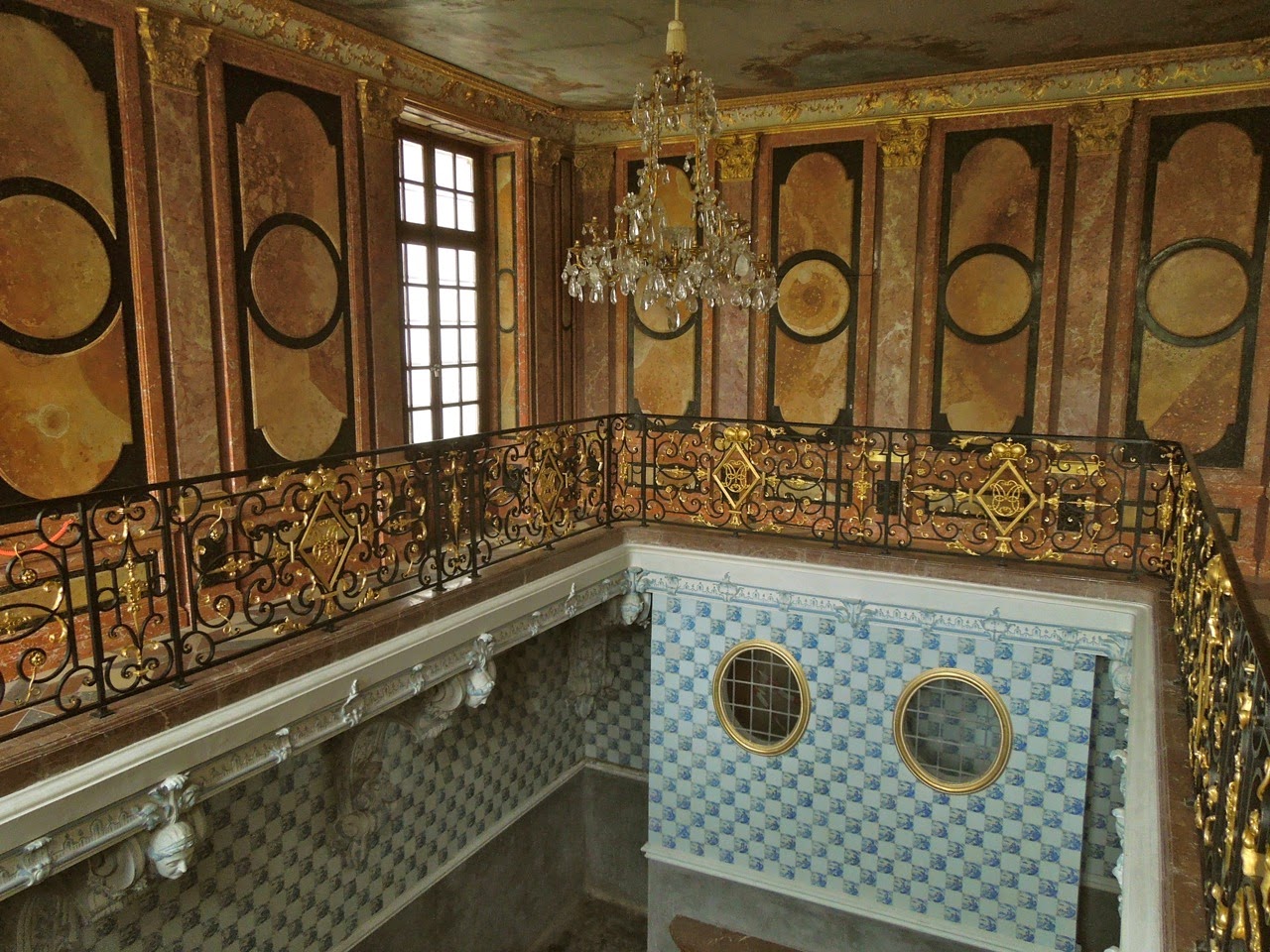





























































































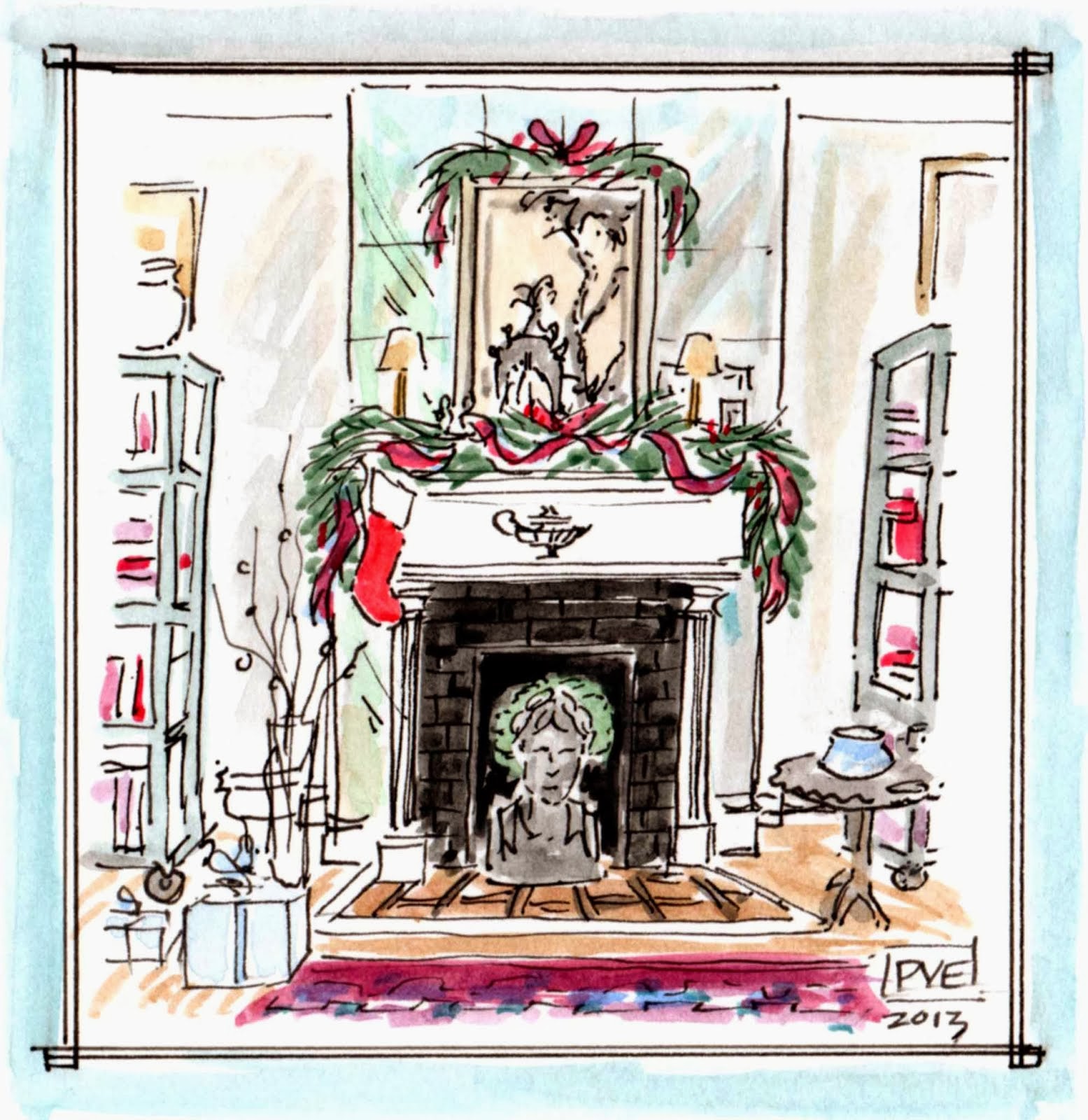




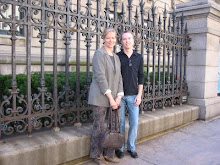



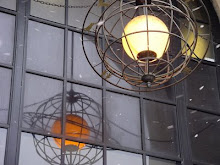
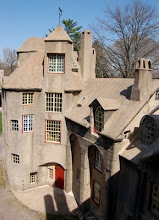


7 comments:
Stefan I can never get enough of Chinoiserie papers especially the antique ones. The workmanship and artistry is mesmerizing!
xoxo
Karena
The Arts by Karena
Somehow, you've just given me a renewed appreciation of daisies. They look absolutely marvelous against the green grass and ochre colored walls of that fine building.
I always appreciate it when a click allows for the enlarged image and a closer inspection — thanks for that.
I was most intrigued by the next to last of the wallpaper images — so interesting to see the clothing details, like the gentleman with the gourd hanging from his waist.
Wow Stefan, the ceilings are spectacular! The art is amazing on the Chinese wallpaper, I've been enlarging and enjoying the photos - the drawn detail is incredible. I agree about the lawn and it gives an approachable welcome right before you enter into grandeur.
Vera
I love colourful Chinese wallpapers. I am surprised that these ones are still as vivid as they are. Is that due to the restoration?
That lawn of daisies ?
Europe never had cheap gas after WWII like USA.
Nor, did they have the luxury of land.
Those 'daisies' are most likely white clover. With other wildflowers coming into bloom earlier/later than the daisies.
Do you know why?
Best for chickens, livestock, and the potager.
Do you know why those white clover are good for the potager?
Increase crop yields on vegetables & fruit by as much as 80%, with zero extra effort. What is the great meaning of this, for our era? The clover/etc are about SURVIVAL.
What does the mixed meadow do for livestock? Supplies needed nutrients/minerals for healthy young to be born without birth defects and continued health/vigor throughout their lives.
Daisies? Hardly. Pure survival for man & beast.
Decades ago touring my first European historic garden I knew immediately that those low meadows were Tara Turf. Been working with it ever since.
USA? Had the luxury of mono-culture lawns needing fertilizers/chemicals/irrigation with a mow-blow-go-commodify-all-I-touch man in a truck to come weekly. The first chemicals advertised for USA landscapes were the chemical companies losing their market at the end of WWII. They advertised to mothers with children, not wanting 'bugs' to bite their babies.
Will stop here, I think you get the idea now about 'daisies'.
Garden & Be Well, XO Tara
Wonderful to see images of these four rooms with Chinese wallpaper at Badenburg. That pink and green colour scheme is curious - I wonder if there has been some kind of oxidisation going on there, I must try to find out. And the landscape wallpaper with the large figures in the foreground seems to be quite rare too, as the figures in Chinese landscape wallpapers tend to be much smaller. But then that is one of the fun things about Chinese wallpaper: that because much of it was hand-painted they could easily adapt and vary the designs. The figures with sofas and tables, by contrast, appear to be a group of Chinese prints 'collaged' together by the German paper-hangers, showing the ingenuity of the western response to these Chinese products. Thank you very much for sharing these pictures.
Post a Comment